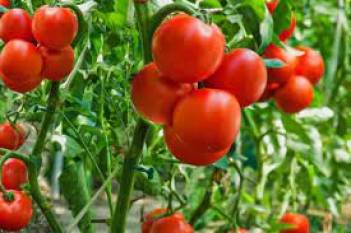NEW DELHI, 28 March 2024: India is a major player in the global tomato market, with a significant portion of its agricultural sector dedicated to tomato cultivation.
The country’s diverse climate and vast agricultural land make it an ideal location for tomato production. Here, we delve into the top states in India that lead in tomato output for the year 2022-23, complete with production figures and statistics.
Leading the Pack
The major tomato producing states in India are Andhra Pradesh, Madhya Pradesh, Karnataka, Gujarat, Bihar, Odisha, West Bengal, Telangana, Chhattisgarh, Haryana, Tamil Nadu, Uttar Pradesh, and Maharashtra. These states account for about 90% of the total production of the country.
Andhra Pradesh
Andhra Pradesh leads the country in tomato production. The state’s tomato production for the year 2022-23 is yet to be estimated.
Madhya Pradesh
Madhya Pradesh follows closely, contributing significantly to the country’s total tomato production. The state’s tomato production for the year 2022-23 is yet to be estimated.
Karnataka
Karnataka is another major tomato producer. The state’s tomato production for the year 2022-23 is yet to be estimated.
Tomato Production in 2022-23
The horticulture production in the country in 2022-23 (Third Advance Estimates) is estimated to be about 355.25 Million Tonnes. The production of Tomato is expected to be around 208.19 Lakh Tonne compared to around 204.25 Lakh Tonne last year, an increase by 1.93% Lakh Tonne.
These are just some of the best states in India for tomato production, but there are many more to discover and explore. As the data for the year 2022-23 gets updated, we will have a clearer picture of the tomato production landscape in India.
What are the challenges faced by tomato farmers?
Tomato farmers in India face a multitude of challenges that can impact their yield and profitability. Here are some of the key challenges:
High Input Costs: The cost of seeds, fertilizers, pesticides, and irrigation can be quite high, making tomato cultivation an expensive endeavor.
Pests and Diseases: Tomato crops are susceptible to various pests and diseases caused by nematodes, viruses, fungi, and bacteria. These can significantly reduce yield and quality.
Postharvest Losses: Inefficiencies in operations such as harvesting, storage, packaging, loading, unloading, and transportation can lead to substantial postharvest losses. This includes reduced shelf life due to improper storage and long-distance transport.
Marketing Challenges: Farmers often struggle with low prices for their produce and lack of storage facilities3. Additionally, they may face difficulties in accessing markets and getting a fair price for their produce.
Debt Burden: Many farmers invest heavily in their tomato crops. If the crops fail or do not yield expected profits, farmers may struggle to recover their investments, leading to substantial debts.
Climate Change: Changes in weather patterns and increasing instances of extreme weather events can also pose significant challenges to tomato cultivation.
These challenges highlight the need for supportive policies, research, and technology interventions to help farmers overcome these obstacles and improve the sustainability and profitability of tomato farming in India.
What are the common tomato pests in India?
Tomato crops in India are susceptible to a variety of pests. Some of the most common ones include:
Fruit Borer (Helicoverpa armigera): This pest is known to cause significant damage to tomato crops. The larvae bore into the fruit, causing it to rot.
Common Army Worm (Spodoptera litura): These caterpillars feed on the leaves of tomato plants, which can lead to defoliation and reduced yield.
Beet Army Worm (Spodoptera exigua): Similar to the common army worm, the beet army worm also feeds on the leaves of tomato plants.
White Fly (Bemisia tabaci): White flies suck sap from the plant and can transmit viral diseases. They can cause significant yield loss.
Leaf Miner (Liriomyza trifolii): Leaf miners cause damage by creating tunnels or “mines” in the leaves of the tomato plant.
Two Spotted Mite (Tetranychus urticae): These mites can cause significant damage to tomato plants by sucking the sap from the leaves.
Tomato Pinworm (Tuta absoluta): This pest causes damage by boring into the leaves, stems, and fruits of tomato plants.
Serpentine Leaf Miner (Liriomyza trifolii): These pests cause damage by mining into the leaf tissue, which can lead to leaf drop and reduced yield.
Mealybugs (Coccidohystrix insolita, Paracoccus marginatus, Phenacoccus parvus, Phenacoccus solenopsis, Ferrisia virgata and Phenacoccus madeirensis): Mealybugs suck sap from the plant and excrete a sticky substance called honeydew, which can lead to the growth of sooty mold.
These pests pose a significant threat to tomato cultivation in India, and managing them effectively is crucial for maintaining healthy crops and good yields.
How can farmers mitigate pest and disease risks?
Farmers can mitigate pest and disease risks in tomato farming through several strategies:
Integrated Pest Management (IPM): This approach combines different pest control methods for effective pest management. It includes biological control, use of resistant varieties, crop rotation, and judicious use of pesticides.
Use of Resistant Varieties: Planting tomato varieties that are resistant to certain pests and diseases can help reduce the impact of these threats.
Proper Field Sanitation: Regularly cleaning the field can help remove pests and diseases that may be present in crop residues.
Crop Rotation: Rotating crops can disrupt the life cycle of pests and diseases, reducing their impact on the tomatoes.
Regular Monitoring: Regularly monitoring the field can help detect pest and disease outbreaks early, allowing for timely intervention.
Organic Farming Techniques: These techniques, which avoid the use of synthetic pesticides and fertilizers, can help maintain soil health and biodiversity, making the crops more resilient to pests and diseases.
Education and Training: Farmers need to be educated and trained on pest and disease identification and management. This can help them make informed decisions about pest and disease control.
These strategies, when used in combination, can help farmers effectively manage pests and diseases in tomato farming.
Organic pest management methods for tomatoes
Organic pest management methods for tomatoes are designed to control pests without the use of synthetic chemicals. Here are some effective organic pest management methods:
Insecticidal Soap: Soap has been used for generations to control pests. When applied, soap destroys insect eggs and larvae, both in the soil and on the plant. It’s particularly effective against aphids.
Horticultural Oils: These oils are effective against many pests. They exist in two kinds, petroleum-based and plant-based. The petroleum ones are highly-refined, so that every compound that could be harmful to plants is removed. The plant-based ones should be used with caution as they could sometimes burn the leaves.
Neem Oil: Derived from the neem tree, neem oil can help control aphids, whiteflies, and mites on tomato plants. Neem oil disrupts the insects’ feeding and reproductive abilities, reducing their population.
Natural Spray: Natural sprays used in pest management include garlic spray, and chilli pepper spray. These sprays are made from natural ingredients and can effectively control pests without harmful chemicals.
Beneficial Insects: Introducing beneficial insects, such as ladybugs and lacewings, can help control pests. These insects are natural predators of common tomato pests.
Crop Rotation: This practice involves changing the type of crop grown in a particular area each season. Crop rotation can help disrupt the life cycle of pests and diseases, reducing their impact on the tomatoes.
Companion Planting: Certain plants, when grown together, can help each other repel pests. For example, basil is known to repel tomato hornworms.
These methods, when used in combination, can help farmers effectively manage pests and diseases in tomato farming.




















